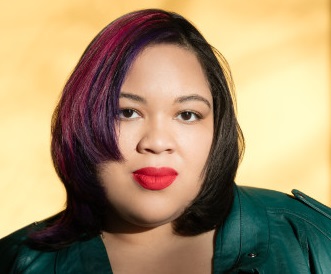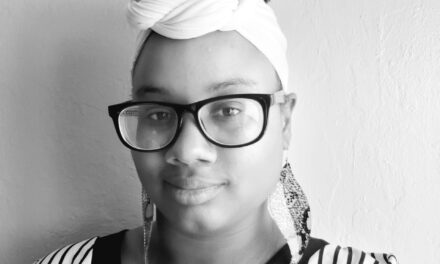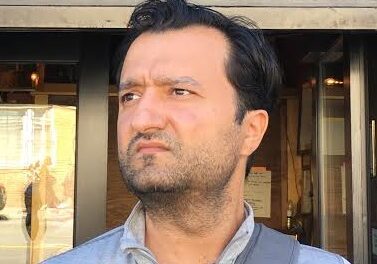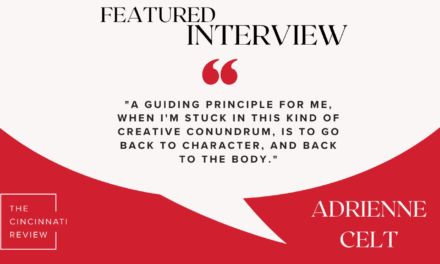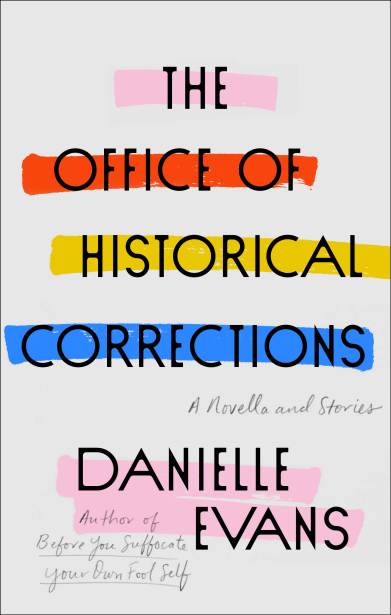
Editorial Assistant Haley Crigger: In her spectacular new fiction collection, The Office of Historical Corrections (Riverhead, 2020), Danielle Evans examines the nature of performance, amending, and making amends amid a vast range of threats: medical racism, ecological doom, patriarchal violence, white supremacy. Armed with Evans’s perfect wit, characters grieve in spaces that verge on the surreal: on the hunt for a runaway groom; under a layer of green body paint; at a predatory artist’s apology tour turned experiential apology exhibit, complete with a volcano room. In the collection’s titular novella, Cassandra is a civil servant for the Institute of Public History, a fictional government agency that surveys and corrects public historical inaccuracies, often distortions of black history—reports of lynchings that omit the names of the perpetrators, a bakery flyer that refers to Juneteenth as “the anniversary of the Emancipation Proclamation!” In an impressive feat of world building, Evans conjures a familiar maddening paradox: when a force is aimed at your extinction, it is often just as dangerous to face and fight it as it is to let it go on unchecked. The result is gripping, genuinely surprising, and nothing short of profound.
I was so excited to talk with Evans about the project of these stories, the role of risk and humor in fiction, affirming Blackness in the passing narrative, and how to write about our most basic feelings.
Because the world of the novella is so recognizable, I was really interested in its elements of fantasy and world building. The genesis and execution of the Institute for Public History are described, at times, with Jemison-esque diligence: “Our work was to protect the historical record, not to pick fights (guideline 1) or correct people’s readings of current news (guideline 2).”
I recently had a conversation with a colleague who, when asked why she never stopped reading or writing fantasy, said that the genre simply never stopped “meeting her needs.” The Office of Historical Corrections is obviously literary, but I wondered how its more extensive world building was tied to your needs as an artist. To put it another way, can you describe what moved you to invent the Institute for Public History?
I am fascinated by electoral politics because it’s at the core of a lot of different things that I return to as a writer: performance, storytelling, DC, people negotiating choices that have both personal and structural stakes, race, gender, US history. But, I’m not that interested in writing the fictionalized biography of an actual political figure. That’s partly just a matter of what I’m drawn to, but I think it’s also a function of how much I understand politics to also involve the work of career civil servants and activists and other people who work behind the scenes. I’m really interested in the work of civil servants, especially in the complicated relationship Black employees often have with the federal government. I had tried working on a project where I had fictionalized the recent past, and had activists engaging imagined political figures, but it felt flat, and increasingly less interesting and more subdued than the real political theater we were living through. Inventing the Institute for Public History gave me a way to get at the thematic questions I was invested in, while getting far enough away from our actual world to free me from the constraints of biography or the task of responding in real time to topical political events.
In your New York Times interview, you mention that this book is weirder than your last, and that you take more risks. I imagined the more extensive world building in The Office of Historical Corrections as one kind of risk. Some may consider Claire, the protagonist of “Boys Go to Jupiter” whose grief and bigotry come to a head in a Confederate flag bikini scandal, another kind of risk. How else do weirdness and risk come into the collection? How would you describe the importance of risk to you as an artist?
Well, there’s a volcano! I think there are stories in this collection that obviously break the rules of realism or flirt with genre in a way that the stories in my first collection didn’t. But I think perhaps the larger strangeness—the kind of risk at play in a story like “Boys Go to Jupiter,” and several others—is that some of the stories start with a narrative that feels familiar, that feels, perhaps, like it’s asking you as a reader to engage in a familiar project: feeling empathy for someone doing something bad, understanding their version of the story, and applauding yourself for it. Then, gradually, that story shapeshifts into something less familiar—the people excluded from the familiar narrative become more apparent, the project becomes less about applauding the reader’s empathy and more about asking the reader to consider the politics of empathy.
But, fundamentally, any new project, whatever its terms, is a risk—you’re always, as a writer, trying to do something you haven’t seen before and aren’t sure you can pull off. I don’t think there’s any way to avoid that at the first draft stage. The thornier questions are sometimes questions of revision—do you risk explaining too much, which takes the oxygen out of the story and alienates readers who already understood it, or do you risk explaining less, leaving more room for the reader but increasing the chance of misinterpretation? On the whole, I think in this collection I chose to explain less—whether that’s out of increased faith in myself as a writer or increased faith in my readers I can’t say for sure.
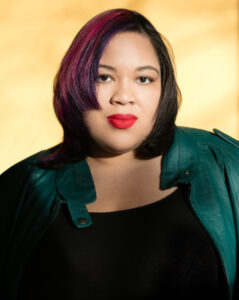
As Katy Waldman considers in her review in the New Yorker, the Little Mermaid analogy in “Happily Ever After” could be said to parody the passing genre, highlighting your story’s richer explorations of otherness, markedness, and isolation. In teaching your own course on the passing narrative, what have you discovered and uncovered about the genre?
I wanted to teach the course in part because I wondered what the passing narrative was doing in the twenty-first century. Obviously, I was drawn to it, but it’s also been rich territory for a lot of other writers in the past twenty years, even though some of the conditions that led to the genre’s earlier flourishing no longer exist. I think some of the genre’s questions of what it can cost to succeed or survive as Black person feel as relevant as ever, as do some of the questions of inheritance—the cost of carrying generational trauma, but also the cost of trying to walk away from the lessons that people who’ve survived a difficult past have tried to teach. It’s a genre that has historically had the potential to point out the absurdity of racism—we have this whole system of race-based oppression, and yet racists often can’t tell who’s “really” Black—but also the potential to, intentionally or not, affirm racism by centering characters who identify with whiteness.
The genre has the potential to be an affirmative case for Blackness—an argument that what’s lost in passing is greater than what’s gained, even when the structural stakes are clearly high—but also has the potential to give the most voice to characters who reject or disdain their own communities and parrot stereotypes. So, I’m interested in the passing narrative’s legacy as a fraught genre, and in the way that savvy writers have navigated those fraught possibilities. One of the things I’ve noticed rereading the texts I taught this semester is how many of these texts have such a clear articulation of not just the relationship between race and structural power, but the relationship between gender and structural power. Often a passing character is a woman—whether for noble or selfish purposes—looking for the clearest path to agency in a world that doesn’t want her to have it.
“Richard of York Gave Battle in Vain” is one of my favorite short stories of all time. It’s an astute meditation on danger; while Rena’s photojournalism career takes her into conflict zones across the globe, it has in another sense spared her the threat of domestic violence, which all but took her sister’s life. The present narrative is also objectively hilarious, set against a bachelorette party where, due to the wedding’s unironic Noah’s Ark theme, each bridesmaid must dress in a different color of the rainbow: “When assembled in a group, Dori’s bridesmaids look like a team of bridal Power Rangers.”
The balance of danger and delight is of course lifelike, reflecting the confounding task of cobbling together some happiness amid a sea of existential threats. How else does humor and joy inform your writing, both thematically and in the writing process?
Thank you! I think humor can work a lot of different ways in fiction. It’s deeply tied to characterization, of course. But it also for me plays a structural role. Sometimes it’s a release valve, so that in a difficult story, you’re not just traumatizing the reader the whole time. Sometimes it’s an affirmation of grief—humor is often so tied to human connection that a person who is funny in their own head is often a person grieving the loss of a connection, a person telling inside jokes to themselves out of isolation or to mark the absence of the person who would have been their audience. In that context, something can be simultaneously hilarious and devastating.
I think the way that humor is working in “Richard of York Gave Battle in Vain” is partly about the structural division of the story. The shape of the active plot in that story diverges from the emotional plot, up until the ending sequence. The active plot, for about the first two-thirds of the story, is about evasion, about a character who doesn’t have agency over this enormous grief in her life, and so is leaning in to the agency of the day by day, the agency of the present tense, which is largely about looking away from the emotional plot. The emotional plot is more of a static line, except in those few places where it surfaces, recasting the tone of the story a bit each time. That’s how the present action of the story can be funny until it isn’t, and the story itself can still be weighted by grief.
You once tweeted something that stuck with me forever: Describing a “bug” in your writing process, you said, “I frequently start first drafts as though I’m a satirist and remember halfway through that I am a sentimental marshmallow.”
Forgive me for using Twitter as a source, but I’m just really interested in how divisive “sentimentality” can be in the discussion of fiction. Could you say what role sentimentality plays in fiction generally, and what role it plays in your own work? Or is it only sentimentality in process, and then something else in execution?
I think the risk of sentimentality is artificiality—the risk that we say something in such a basic way that instead of creating the possibility of connection or illumination, we fall into cliché, and sound like we’re talking about nothing because we could be talking about anything. At the same time, I think there are emotions that are, at their core, fairly basic. We can dress sentiment up in fancy language or metaphor, we can hide it in stories with elaborate plots and complicated characters, but we can only do so much to escape that part of what hurts sometimes is that the worst thing that’s ever happened to you is also so common and basic, and hurts no less for being so. Many of the stories in my collection are about grief, and grief at its most honest feels often tawdry and sentimental. Is there an unsentimental way to say “I miss my mother”? If there is, I don’t think it’s necessarily any more honest or intelligent than saying it plainly.
The risk is in emphasizing the sentimental at the expense of everything else. Another way that I’ve expressed what you quoted in your question is “I have to keep remembering that I’m not a satirical writer, I am a sentimental writer who is also extremely angry and sometimes funny.” The humor and the anger—and the way they aren’t diminished by grief or love or trauma or any of the things we might be sentimental about—are also crucial, for rendering a more clear and complicated picture of the objects of love or grief or desire. Sometimes you need both the sentimental and the things that tether it.
Danielle Evans is the author of the story collections The Office of Historical Corrections (Riverhead, 2020) and Before You Suffocate Your Own Fool Self (Riverhead, 2010). Her work has won awards and honors including the PEN American Robert W. Bingham Prize, the Hurston-Wright award for fiction, and the Paterson Prize for fiction. She is a 2011 National Book Foundation 5 under 35 honoree and a 2020 National Endowment for the Arts fellow. She currently teaches in the Writing Seminars at Johns Hopkins University.
Haley Crigger is a writer and teacher living in Covington, Kentucky. She received an MFA in fiction from the Johns Hopkins Writing Seminars and is currently pursuing her PhD at the University of Cincinnati. Her work can be found in the Colorado Review and Hopkins Review.

